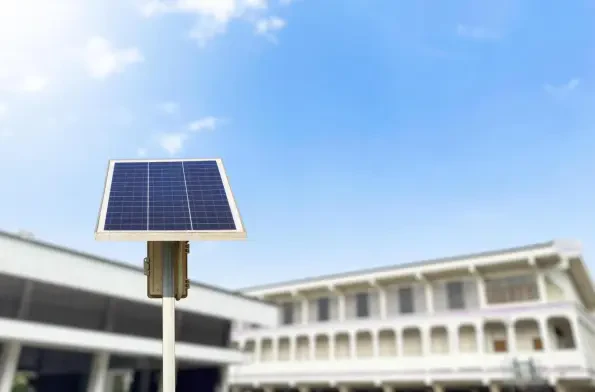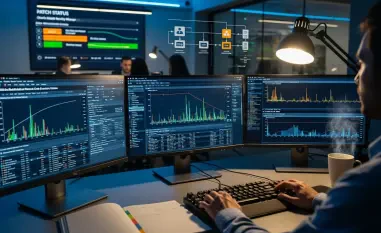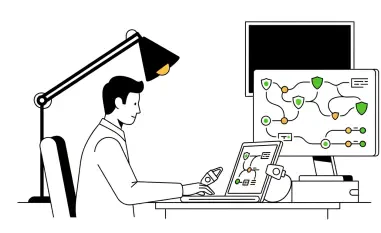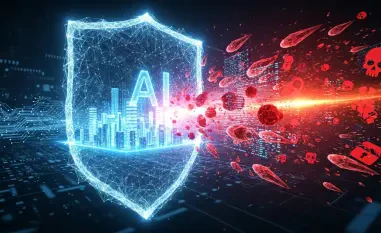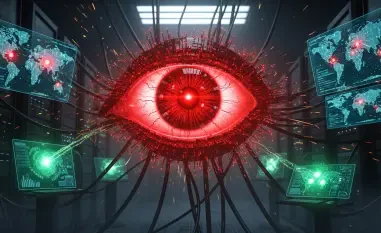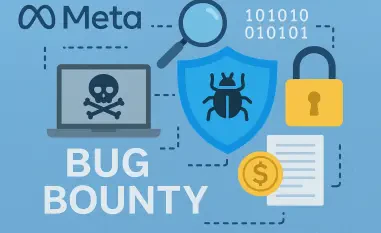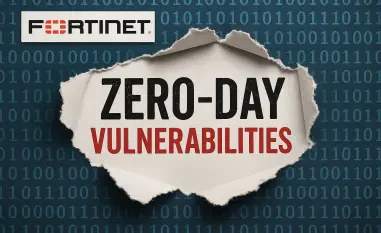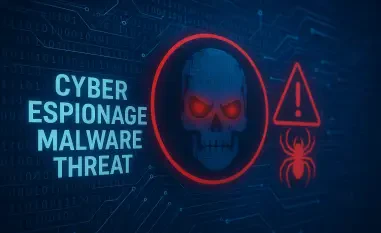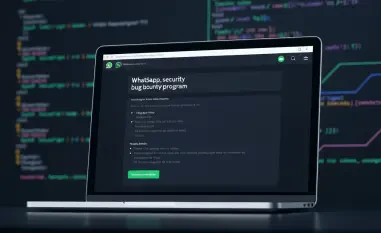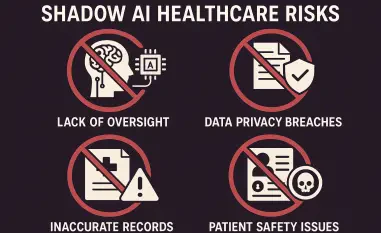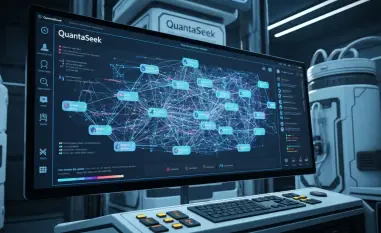In the evolving realm of renewable energy, solar technology emerges not only as a contender for sustainable solutions but also as a potential cybersecurity hazard. Recent investigations highlight significant security vulnerabilities afflicting approximately 35,000 solar power devices from 42 different vendors, primarily within interfaces openly exposed to cyber threats. This revelation by Forescout’s Sun:Down research delivers an alarming narrative where sophisticated In the evolving realm of renewable energy, solar technology emerges not only as a contender for sustainable solutions but also as a potential cybersecurity hazard. Recent investigations highlight significant security vulnerabilities afflicting approximately 35,000 solar power devices from 42 different vendors, primarily within interfaces openly exposed to cyber threats. This revelation by Forescout’s Sun:Down research delivers an alarming narrative where sophisticated cybercriminals can exploit nearly 50 identified vulnerabilities to infiltrate critical systems. As solar technology integrates further into global energy frameworks, understanding these risks becomes paramount, raising questions about the security of such devices and the impacts of their vulnerabilities on global infrastructures.
Exploring the Cybersecurity Landscape of Solar Devices
The research underscores the current cybersecurity landscape as it pertains to solar devices, particularly focusing on vulnerabilities in management interfaces. Central questions revolve around how these devices, such as inverters and data loggers, act as entry points for cyber threats, and what measures can mitigate these risks. The challenge lies in safeguarding these integral components of solar installations from becoming conduits for cyber adversaries. With technology advancing rapidly, addressing these weaknesses not only secures individual devices but also fortifies overall network integrity. This necessitates a deep dive into the cybersecurity protocols, or lack thereof, currently governing these energy solutions.
Background of Solar Device Vulnerabilities
Vulnerabilities in solar devices have long persisted below the radar of mainstream cybersecurity discussions. The notable exposure of systems belonging predominantly to major vendors like SMA Solar Technology, Fronius International, and Solare Datensysteme accentuates the breadth of this concern. Incidents such as the hijacking of SolarView Compact devices for illicit bank account access in Japan further stress the urgency of this issue. The research holds immense relevance given the global push for smarter renewable options and the proliferating use of such technology. Ensuring secure solar frameworks not only protects individual stakeholders but also upholds broader energy security and resilience.
Research Methodology, Findings, and Implications
Methodology
The analytical approach utilized by Forescout incorporated a multi-layered examination of solar device networks, employing diverse tools and techniques to uncover vulnerabilities. This process involved geolocating devices, evaluating exposed interfaces, and cross-referencing known cyber threats against identified functions and features. The research combined technical data scrutiny with real-world impact scenarios, providing a holistic view on where and how vulnerabilities manifest globally. Detailed digital forensics were applied to delve into the extent and origins of security flaws, setting a foundation for identifying viable solutions moving forward.
Findings
The research unveiled approximately 50 vulnerabilities across devices from 42 vendors, with a troubling majority featuring on critical flaw lists. These findings indicate substantial exposure, with 76% of vulnerable systems located in Europe, followed by 17% in Asia. The susceptibility of these devices to cyber threats reveals an urgent need for advanced security protocols. Major incidents have already demonstrated these vulnerabilities’ potential to be leveraged for malicious activities, necessitating immediate action to patch or retire compromised systems.
Implications
The implications of these findings are extensive, highlighting the necessity for a collective industry pivot toward bolstering security standards for solar installations. Practically, they advocate for the adherence to guidelines from authorities such as CISA, alongside implementing cybersecurity best practices proposed by the National Institute of Standards and Technology. Theoretically, this research enriches the dialogue around integrating sophisticated security measures within Internet-of-Things frameworks across renewable energy domains. On a societal level, a secure transition toward renewable energy solutions becomes possible, protecting both individual and national interests from potential cyber exploitation.
Reflection and Future Directions
Reflection
The research process unearthed various complexities, notably the challenge of bridging digital analysis with actionable preventive measures. Overcoming these required collaboration with cybersecurity experts and device manufacturers to devise practical solutions. While the findings shed light on significant vulnerabilities, there remains room to explore more nuanced aspects, such as real-time adaptive security protocols and the continual evolution of threat landscapes.
Future Directions
Future research could delve deeper into the dynamics of threat intelligence specific to solar technologies, potentially exploring innovative encryption and security frameworks. Investigating unanswered questions, such as how to seamlessly retrofit security into existing infrastructures, could pave the way for broader explorative opportunities. Additionally, expanding the scope to consider interconnected renewable energy systems might yield further insights into developing comprehensive, cross-disciplinary security strategies.
Conclusion and Final Thoughts
The investigation into solar device vulnerabilities confirms that these systems represent a pressing cybersecurity concern with substantial implications. By demonstrating the breadth of vulnerabilities, the research has emphasized the urgent need for enhanced protective measures. Moving forward, incorporating robust security standards and fostering collaboration across sectors stands as vital steps in ensuring the safety and resilience of solar technologies. The study’s contribution not only highlights existing flaws but also serves as a catalyst for future innovations and advancements in renewable energy cybersecurity, steering the industry towards a more secure and sustainable future.s can exploit nearly 50 identified vulnerabilities to infiltrate critical systems. As solar technology integrates further into global energy frameworks, understanding these risks becomes paramount, raising questions about the security of such devices and the impacts of their vulnerabilities on global infrastructures.
Exploring the Cybersecurity Landscape of Solar Devices
The research underscores the current cybersecurity landscape as it pertains to solar devices, particularly focusing on vulnerabilities in management interfaces. Central questions revolve around how these devices, such as inverters and data loggers, act as entry points for cyber threats, and what measures can mitigate these risks. The challenge lies in safeguarding these integral components of solar installations from becoming conduits for cyber adversaries. With technology advancing rapidly, addressing these weaknesses not only secures individual devices but also fortifies overall network integrity. This necessitates a deep dive into the cybersecurity protocols, or lack thereof, currently governing these energy solutions.
Background of Solar Device Vulnerabilities
Vulnerabilities in solar devices have long persisted below the radar of mainstream cybersecurity discussions. The notable exposure of systems belonging predominantly to major vendors like SMA Solar Technology, Fronius International, and Solare Datensysteme accentuates the breadth of this concern. Incidents such as the hijacking of SolarView Compact devices for illicit bank account access in Japan further stress the urgency of this issue. The research holds immense relevance given the global push for smarter renewable options and the proliferating use of such technology. Ensuring secure solar frameworks not only protects individual stakeholders but also upholds broader energy security and resilience.
Research Methodology, Findings, and Implications
Methodology
The analytical approach utilized by Forescout incorporated a multi-layered examination of solar device networks, employing diverse tools and techniques to uncover vulnerabilities. This process involved geolocating devices, evaluating exposed interfaces, and cross-referencing known cyber threats against identified functions and features. The research combined technical data scrutiny with real-world impact scenarios, providing a holistic view on where and how vulnerabilities manifest globally. Detailed digital forensics were applied to delve into the extent and origins of security flaws, setting a foundation for identifying viable solutions moving forward.
Findings
The research unveiled approximately 50 vulnerabilities across devices from 42 vendors, with a troubling majority featuring on critical flaw lists. These findings indicate substantial exposure, with 76% of vulnerable systems located in Europe, followed by 17% in Asia. The susceptibility of these devices to cyber threats reveals an urgent need for advanced security protocols. Major incidents have already demonstrated these vulnerabilities’ potential to be leveraged for malicious activities, necessitating immediate action to patch or retire compromised systems.
Implications
The implications of these findings are extensive, highlighting the necessity for a collective industry pivot toward bolstering security standards for solar installations. Practically, they advocate for the adherence to guidelines from authorities such as CISA, alongside implementing cybersecurity best practices proposed by the National Institute of Standards and Technology. Theoretically, this research enriches the dialogue around integrating sophisticated security measures within Internet-of-Things frameworks across renewable energy domains. On a societal level, a secure transition toward renewable energy solutions becomes possible, protecting both individual and national interests from potential cyber exploitation.
Reflection and Future Directions
Reflection
The research process unearthed various complexities, notably the challenge of bridging digital analysis with actionable preventive measures. Overcoming these required collaboration with cybersecurity experts and device manufacturers to devise practical solutions. While the findings shed light on significant vulnerabilities, there remains room to explore more nuanced aspects, such as real-time adaptive security protocols and the continual evolution of threat landscapes.
Future Directions
Future research could delve deeper into the dynamics of threat intelligence specific to solar technologies, potentially exploring innovative encryption and security frameworks. Investigating unanswered questions, such as how to seamlessly retrofit security into existing infrastructures, could pave the way for broader explorative opportunities. Additionally, expanding the scope to consider interconnected renewable energy systems might yield further insights into developing comprehensive, cross-disciplinary security strategies.
Conclusion and Final Thoughts
The investigation into solar device vulnerabilities confirms that these systems represent a pressing cybersecurity concern with substantial implications. By demonstrating the breadth of vulnerabilities, the research has emphasized the urgent need for enhanced protective measures. Moving forward, incorporating robust security standards and fostering collaboration across sectors stands as vital steps in ensuring the safety and resilience of solar technologies. The study’s contribution not only highlights existing flaws but also serves as a catalyst for future innovations and advancements in renewable energy cybersecurity, steering the industry towards a more secure and sustainable future.
